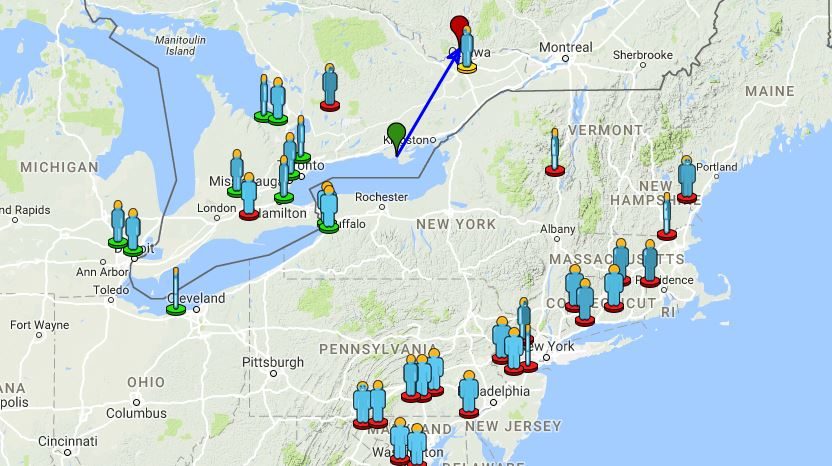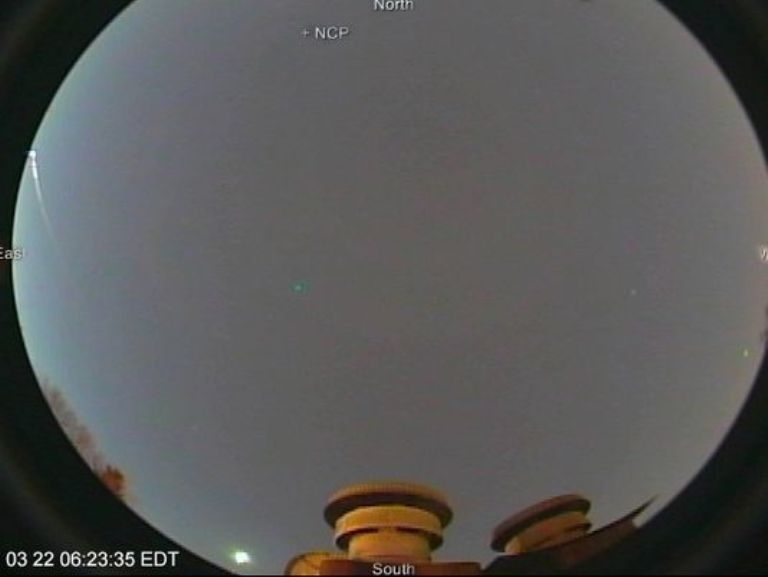
© American Meteor Society (screen capture)
A fist-sized fireball flashed in front of Lori Connolly's car as she drove to work early Wednesday morning.
"Crazy, right? I'm driving and it was right in front of my car. It just came right across the road," the Haverstraw resident said. "It was just an amazing thing to see."
After some investigation, and a call to Columbia University's Lamont-Doherty Earth Observatory in Palisades, Connolly learned that it was, in fact, a meteor.
The object Connolly perceived as a fireball traveling across Route 9W at about 6:20 a.m. was seen across the Northeast, according to an online event log maintained by the American Meteor Society. There were 34 sightings from as far away as Michigan and Ontario that were logged by the AMS.
Connolly said the meteor "dissipated" as it crossed the road but, in fact, that was a trick of the eye. What she perceived as directly in front of her car was quite a bit farther away.
"We looked into this, and discovered that a large meteor did light up in the atmosphere roughly between northern Lake Erie and Ottawa at this time," said Kevin Krajick, Lamont-Doherty's senior editor for science news. "It was seen from Michigan to Virginia."

© Submitted/ Amsmeteors.org/Bill Longo
Connolly considered stopping to look for fragments — "It could have very well landed in the woods," she said — but according to AMS, the meteorite finished it's flight just north of Ottawa, about 300 miles away from Haverstraw.
It's not known if this particular meteor exploded in the atmosphere or made it to the ground to become a meteorite.
"Most of the shooting stars, the fireballs, the meteors, are so small that they don't survive to the earth's surface," said Lamont-Doherty director and planetary scientist Sean Solomon. "It could have been the size of a grain of sand and still be visible."
Terry Casscles of West Haverstraw was also driving to work just before 6:30 a.m. Wednesday morning when she saw what she described as "a flash of light and then, poof," just above the treeline.
She understood that the object might have been farther away than she perceived but was incredulous when told she had seen something over Canada.
"It probably could have been three or four miles away," she said.
"Distances of meteors can often be deceptive, especially when viewed near the horizon," Krajick said.
According to Solomon, it's largely a question of brightness.
"Seeing a fireball it's difficult to gauge the distance. Meteors can be seen for hundreds of miles," he said. "It's so bright, you have a tendency to think it's so close."
That being said, a close encounter with a meteor is not impossible.
Back in 1992, a football-sized space rock punched a hole through a Chevy Malibu owned by Peekskill resident Michelle Knapp.
That meteorite made its way to the Peekskill police station, where geologist Bill Menke, professor of Earth and Environmental Sciences at Columbia University, was called in to verify its origin.
"It was quite an exciting adventure that we had," Menke said, "visiting the sight of the strike, seeing the car with the hole through it."
Menke said the story of the so-called Peekskill Meteorite has taken on a life of its own, which he attributes to movies like "Deep Impact" and "Armageddon."
"In the last couple decades meteor strikes have garnered much more attention in the popular mind,"
Comment: Earlier on the day of this sighting (March 22nd) another meteor fireball was observed streaking across the U.S. East coast.